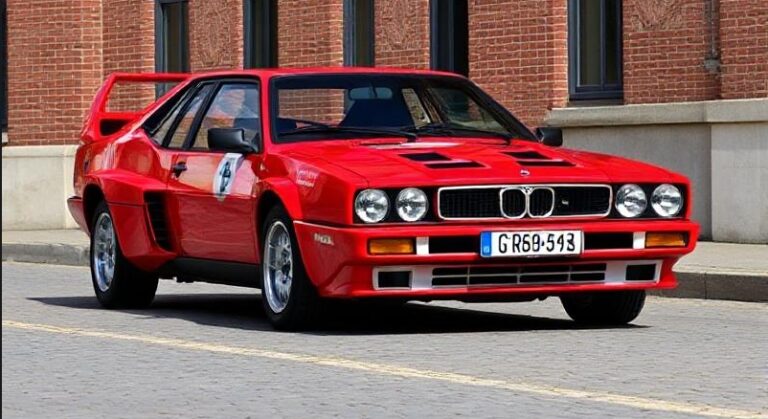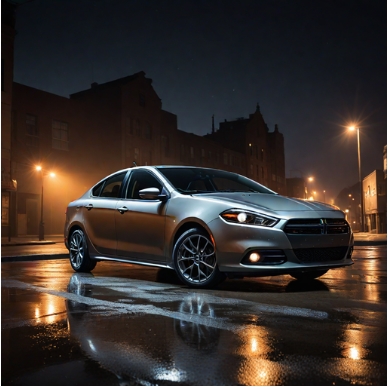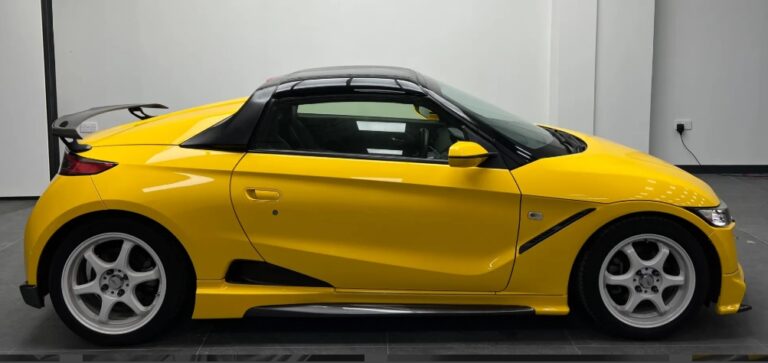Of Bulls and Ambition: The Critical Evolution of the Lamborghini 400
In the pantheon of automotive legends, Lamborghini often conjures images of scissor doors, outrageous V12 engines mounted behind the driver, and audacious, wedge-shaped designs that seem to defy both physics and convention. Yet, before the Miura redefined the supercar and the Countach adorned a generation of bedroom walls, a more sober, elegant, and arguably more important series of cars laid the very foundation for the brand’s survival and success: the Lamborghini 400 series. This was not a single model, but a critical evolutionary chain that transformed Ferruccio Lamborghini’s fledgling company from a bold upstart into a bona fide manufacturer of world-class Grand Tourers.
The story begins not with the 400, but with its direct predecessor, the 350 GT. Unveiled in 1964, the 350 GT was Ferruccio’s magnificent answer to Enzo Ferrari’s perceived arrogance. It featured a sophisticated chassis, independent suspension on all four corners, and a glorious 3.5-litre V12 engine designed by Giotto Bizzarrini, a man who had famously helped develop Ferrari’s own 250 GTO. With a body styled by Carrozzeria Touring Superleggera, the 350 GT was a triumph, proving Lamborghini could build a fast, beautiful, and refined GT car. But in the hyper-competitive world of Italian exotics, standing still meant falling behind. Ferruccio knew his creation needed more power and, to broaden its appeal, more practicality. This ambition set the stage for the evolution into the 400 series.
.

.
The Bridge: The 400 GT “Interim” (1966)
The first step in this evolution was a brief but significant transitional model produced in 1966, often referred to by collectors and historians as the 400 GT “Interim” or simply the 400 GT. It was, in essence, a hybrid—a bridge between the original concept and the car that would truly establish the company.
For this model, Lamborghini retained the beautiful two-seater steel body of the final 350 GTs, complete with its elegant oval headlights and sweeping fastback profile. The real change lay under the long bonnet. The Bizzarrini-designed V12 was given a crucial upgrade. By increasing the engine’s bore from 77mm to 82mm while keeping the stroke the same, displacement swelled from 3,464 cc to a more muscular 3,929 cc. This new 4.0-litre V12, breathing through six twin-choke Weber carburetors, saw a significant power jump from the 350 GT’s 280 horsepower to a formidable 320 horsepower at 6,500 rpm.
This wasn’t the only engineering milestone. Early in his venture, Ferruccio had relied on a well-regarded ZF five-speed manual transmission. However, his ultimate goal was self-sufficiency. The 400 GT Interim debuted Lamborghini’s very first in-house designed and manufactured five-speed gearbox. It was a statement of intent, proving the company had the engineering acumen to produce not just engines, but entire drivetrains. The rear differential was also a new Lamborghini-designed unit, further enhancing the car’s bespoke credentials.
Production of the 400 GT Interim was extremely limited. Only 23 examples were built in 1966 before the factory retooled for the next, more significant iteration. Today, these cars are exceptionally rare and represent the purest expression of the uprated 4.0-litre engine in the original two-seater GT form.
The Definitive Statement: The 400 GT 2+2 (1966-1968)
While the Interim was a potent upgrade, the car that truly defined the 400 series was the 400 GT 2+2, which entered production later in 1966. This was the model that fulfilled Ferruccio’s desire for greater practicality and directly targeted the four-seat grand tourers offered by Ferrari and Maserati.
Carrozzeria Touring was once again tasked with the redesign, and their work was a masterful exercise in subtlety. To accommodate a pair of small rear seats (suitable for children or short journeys), the roofline was raised by a subtle 2.6 inches. The overall profile was squared-off slightly, providing more headroom and a greater glasshouse area. The most noticeable aesthetic change was at the front, where the 350 GT’s elegant single oval headlights were replaced by a more aggressive and modern quad-headlight arrangement, a design cue that would define the look of many sports cars of the late 1960s.
Mechanically, the 400 GT 2+2 was a direct continuation of the Interim model. It used the same robust 4.0-litre, 320-horsepower V12, the new Lamborghini-built five-speed transmission, and the improved differential. The result was a car that offered scintillating performance for its day, capable of reaching speeds in excess of 155 mph (250 km/h), while also providing a level of comfort and usability its two-seat predecessor couldn’t match.
The 400 GT 2+2 was a resounding commercial success. Between 1966 and 1968, approximately 247 units were produced. This figure may seem small by modern standards, but for a new manufacturer, it was a triumph. It outsold all previous Lamborghini models combined, provided the company with stable financial footing, and cemented its reputation as a serious competitor to the established Italian marques. It was with the 400 GT 2+2 that Lamborghini truly arrived.
The Final Form: The Islero 400 GT & 400 GTS (1968-1969)
The evolution of the front-engined V12 grand tourer did not end with the 400 GT 2+2. As the 1960s drew to a close, automotive design began to shift away from the sensuous curves of the early part of the decade towards sharper, more angular lines. Furthermore, a business crisis struck Lamborghini’s partner: Carrozzeria Touring went bankrupt in 1966. This forced Lamborghini to find a new coachbuilder. The task fell to Carrozzeria Marazzi, which was run by a former Touring employee, Mario Marazzi.
Using the proven chassis and running gear of the 400 GT 2+2, Marazzi penned a new, more contemporary body. The resulting car was named the Islero, after a famous fighting bull that had killed the legendary matador Manolete in 1947.
Islero 400 GT (1968-1969)
The first version, the Islero (often referred to as the Islero 400 GT), was introduced in 1968. Its sober, almost restrained styling was a departure from the flowing lines of the Touring-bodied cars. It featured a clean, notchback coupe design with a wide front grille and distinctive pop-up headlights, a very fashionable feature of the era.
Under the skin, it was mechanically identical to its predecessor, featuring the 4.0-litre V12 producing 320 horsepower. However, the initial cars built by the fledgling Marazzi suffered from some fit-and-finish issues, with critics noting a decline in build quality compared to the Touring-built vehicles. Despite this, the Islero offered impressive performance in a discreet and comfortable package. Ferruccio Lamborghini himself famously used an Islero as his personal car. 125 units of the standard Islero were produced.
Islero 400 GTS (1969)
Lamborghini was quick to address the criticisms of the initial model. In 1969, they introduced an updated and significantly improved version: the Islero S, or 400 GTS. This was the final and ultimate evolution of the original GT platform.
The “S” designation brought with it a more potent engine. By adopting the higher-compression and revised camshafts from the otherworldly Miura S, the Islero S’s V12 now produced a thrilling 350 horsepower. This sharpened its performance, making it one of the fastest front-engined GTs of its time.
Exterior changes were subtle but effective. The S model gained slightly flared wheel arches to accommodate wider tyres, and the front fender vents were replaced with a single, larger slotted vent. Small details, like a fixed triangular window in the doors, also distinguished it from the earlier model.
The most significant improvements, however, were inside. The interior was completely redesigned with a new dashboard, rocker switches, better instruments, and more supportive seats. Air conditioning and power steering became more widely available, greatly enhancing the car’s grand touring credentials. These changes addressed nearly all the shortcomings of the first series, making the Islero S a truly resolved and highly desirable automobile. Only 100 examples of the Islero S were built, marking the end of this distinguished lineage.
Legacy of the 400 Series
The curtain fell on the Islero in late 1969, making way for the larger, more flamboyant Jarama. By this time, the mid-engined Miura had already captivated the world, and Lamborghini’s identity was beginning to shift towards the more radical design language it is known for today.
Yet, the importance of the 400 series cannot be overstated. It was the bedrock upon which the legend was built. The evolution from 350 GT to 400 GT Interim, then to the 400 GT 2+2, and finally to the Islero and Islero S, tells a story of relentless improvement and engineering ambition. This series established the 4.0-litre V12 as the heart of the Raging Bull for over a decade, provided financial stability, and proved that Ferruccio Lamborghini’s company was far more than a one-hit wonder. They were sophisticated, fast, and elegant machines that demonstrated a mastery of the Grand Tourer formula, setting a standard of excellence that would empower the brand to reach for the stars with the wild icons that followed.







